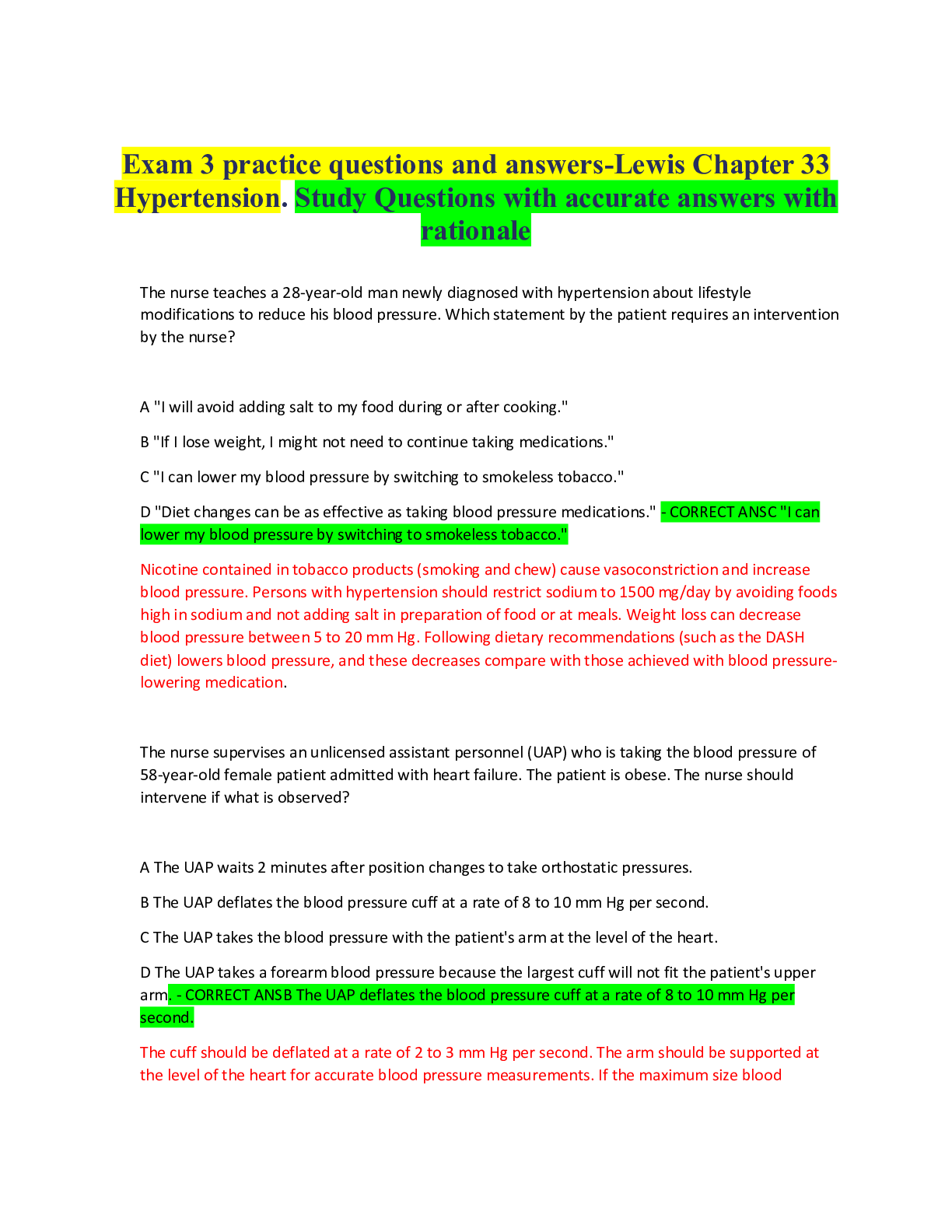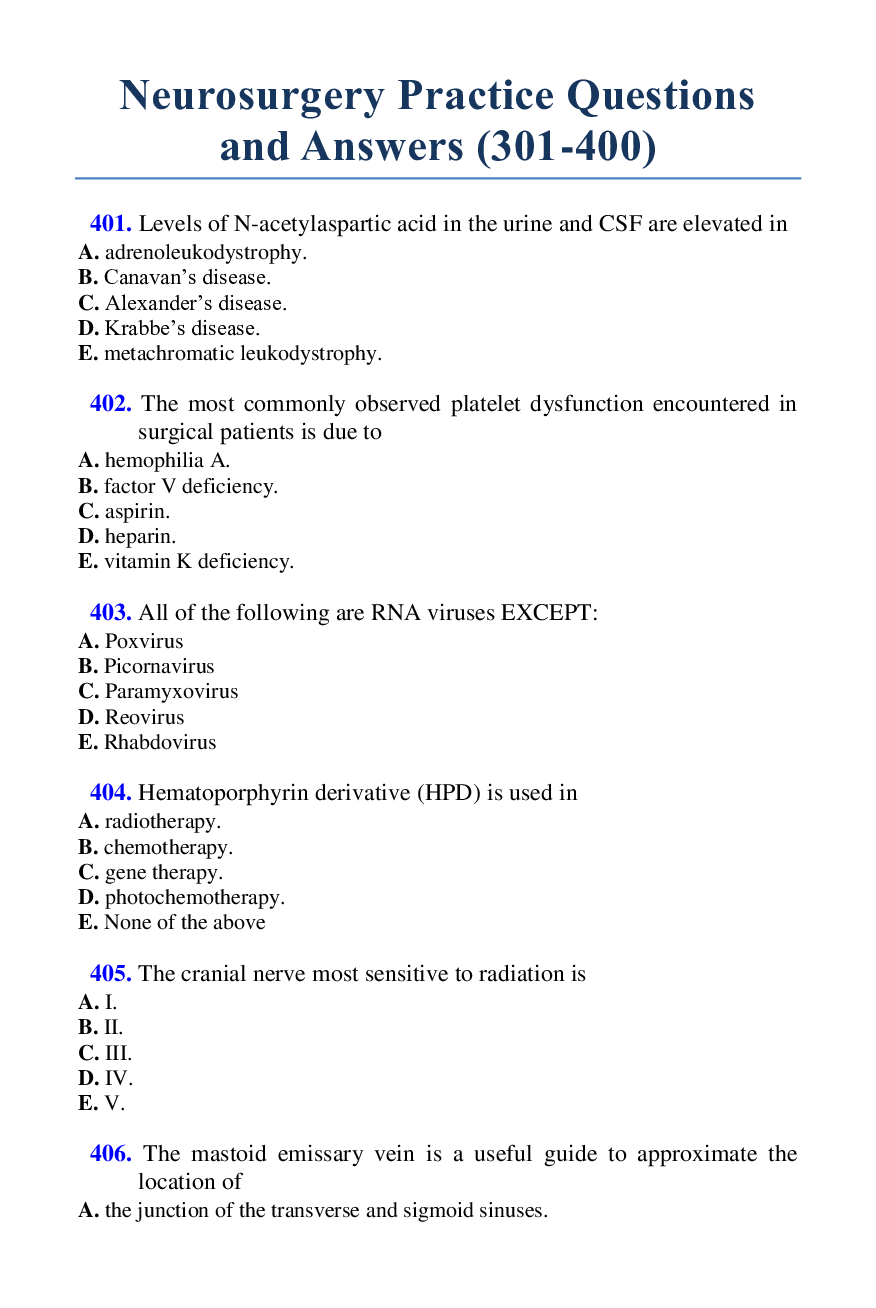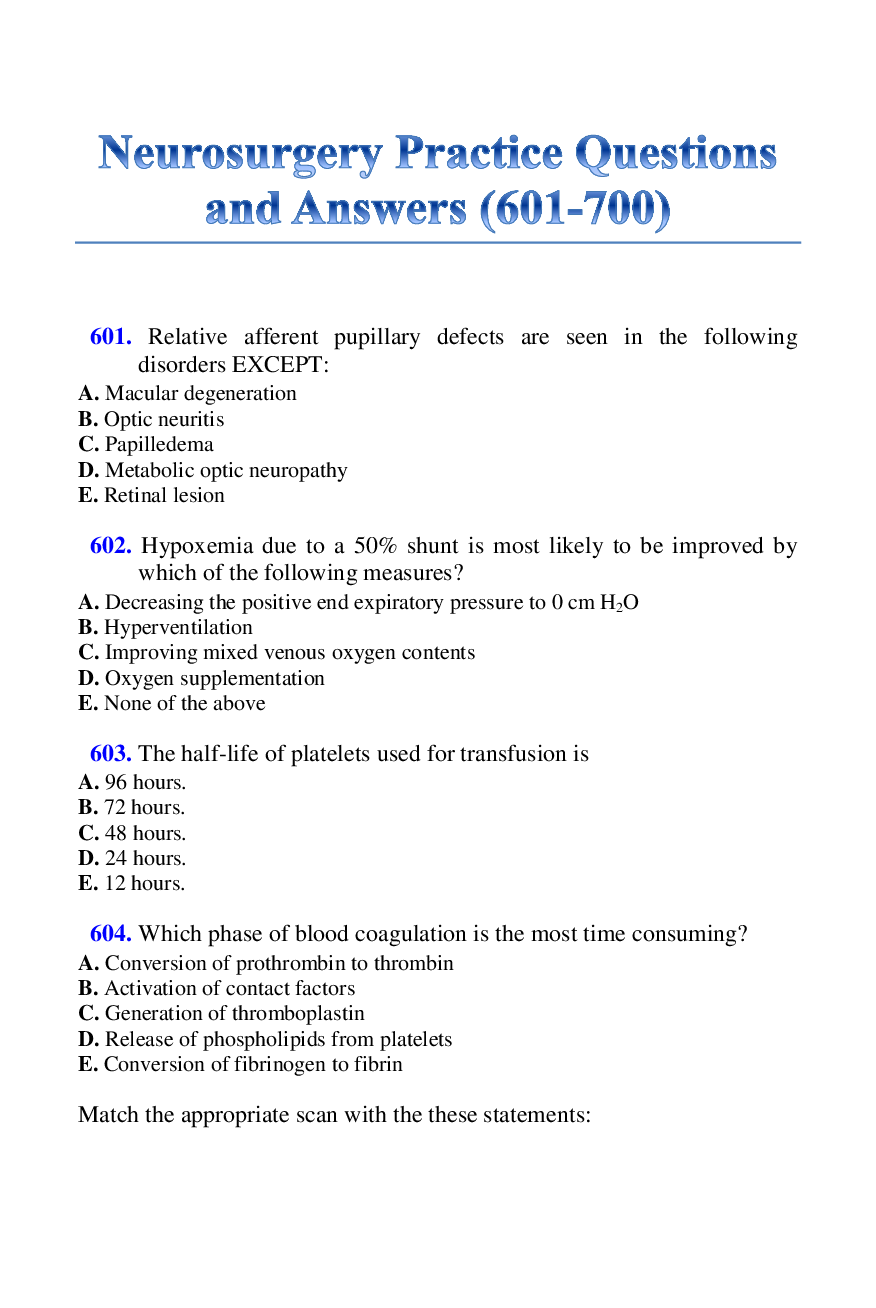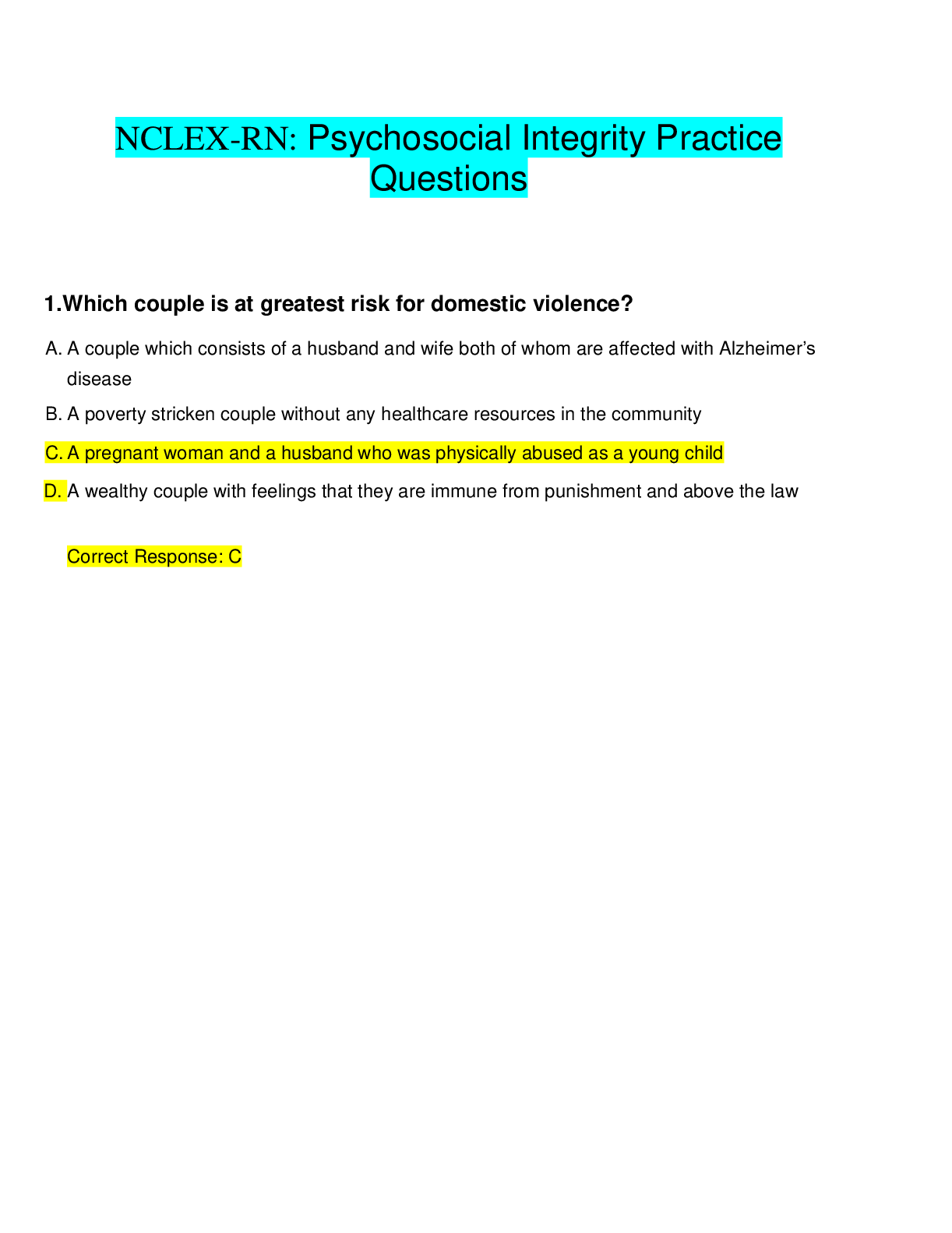*NURSING > QUESTIONS & ANSWERS > Exam 3 practice questions and answers-Lewis Chapter 33 Hypertension. Study Questions with accurate a (All)
Exam 3 practice questions and answers-Lewis Chapter 33 Hypertension. Study Questions with accurate answers with rationale
Document Content and Description Below
The nurse teaches a 28-year-old man newly diagnosed with hypertension about lifestyle modifications to reduce his blood pressure. Which statement by the patient requires an intervention by the nurse... ? A "I will avoid adding salt to my food during or after cooking." B "If I lose weight, I might not need to continue taking medications." C "I can lower my blood pressure by switching to smokeless tobacco." D "Diet changes can be as effective as taking blood pressure medications." - CORRECT ANSC "I can lower my blood pressure by switching to smokeless tobacco." Nicotine contained in tobacco products (smoking and chew) cause vasoconstriction and increase blood pressure. Persons with hypertension should restrict sodium to 1500 mg/day by avoiding foods high in sodium and not adding salt in preparation of food or at meals. Weight loss can decrease blood pressure between 5 to 20 mm Hg. Following dietary recommendations (such as the DASH diet) lowers blood pressure, and these decreases compare with those achieved with blood pressurelowering medication. The nurse supervises an unlicensed assistant personnel (UAP) who is taking the blood pressure of 58-year-old female patient admitted with heart failure. The patient is obese. The nurse should intervene if what is observed? A The UAP waits 2 minutes after position changes to take orthostatic pressures. B The UAP deflates the blood pressure cuff at a rate of 8 to 10 mm Hg per second. C The UAP takes the blood pressure with the patient's arm at the level of the heart. D The UAP takes a forearm blood pressure because the largest cuff will not fit the patient's upper arm. - CORRECT ANSB The UAP deflates the blood pressure cuff at a rate of 8 to 10 mm Hg per second. The cuff should be deflated at a rate of 2 to 3 mm Hg per second. The arm should be supported at the level of the heart for accurate blood pressure measurements. If the maximum size bloodpressure cuff does not fit the upper arm, the forearm may be used. Orthostatic blood pressures should be taken within 1 to 2 minutes of repositioning the patient. A 44-year-old man is diagnosed with hypertension and receives a prescription for benazepril (Lotensin). After the nurse teaches him about the medication, which statement by the patient indicates his correct understanding? A "If I take this medication, I will not need to follow a special diet." B "It is normal to have some swelling in my face while taking this medication." C "I will need to eat foods such as bananas and potatoes that are high in potassium." D "If I develop a dry cough while taking this medication, I should notify my doctor." - CORRECT ANSD "If I develop a dry cough while taking this medication, I should notify my doctor." Benazepril is an angiotensin-converting enzyme inhibitor. The medication inhibits breakdown of bradykinin, which may cause a dry, hacking cough. Other adverse effects include hyperkalemia. Swelling in the face could indicate angioedema and should be reported immediately to the prescriber. Patients taking drug therapy for hypertension should also attempt lifestyle modifications to lower blood pressure such as a reduced-sodium diet. A 67-year-old woman with a history of coronary artery disease and prior myocardial infarction is admitted to the emergency department with a blood pressure of 234/148 mm Hg and started on IV nitroprusside (Nitropress). What should the nurse determine as an appropriate goal for the first hour of treatment? A Mean arterial pressure lower than 70 mm Hg B Mean arterial pressure no more than 120 mm Hg C Mean arterial pressure no lower than 133 mm Hg D Mean arterial pressure between 70 and 110 mm Hg - CORRECT ANSC Mean arterial pressure no lower than 133 mm Hg The initial treatment goal is to decrease mean arterial pressure by no more than 25% within minutes to 1 hour. If the patient is stable, the goal for BP is 160/100 to 110 mm Hg over the next 2 to 6 hours. Lowering the blood pressure too much may decrease cerebral, coronary, or renal perfusion and could precipitate a stroke, myocardial infarction, or renal failure. Additional gradual reductions toward a normal blood pressure should be implemented over the next 24 to 48 hours if the patient is clinically stable.The nurse admits a 73-year-old male patient with dementia for treatment of uncontrolled hypertension. The nurse will closely monitor for hypokalemia if the patient receives which medication? A Clonidine (Catapres) B Bumetanide (Bumex) C Amiloride (Midamor) D Spironolactone (Aldactone) - CORRECT ANSB Bumetanide (Bumex) Bumetanide is a loop diuretic. Hypokalemia is a common adverse effect of this medication. Amiloride is a potassium-sparing diuretic. Spironolactone is an aldosterone-receptor blocker. Hyperkalemia is an adverse effect of both amiloride and spironolactone. Clonidine is a central-acting α-adrenergic antagonist and does not cause electrolyte abnormalities. The nurse teaches a patient with hypertension that uncontrolled hypertension may damage organs in the body primarily by which mechanism? A Hypertension promotes atherosclerosis and damage to [Show More]
Last updated: 1 year ago
Preview 1 out of 8 pages
Instant download

Buy this document to get the full access instantly
Instant Download Access after purchase
Add to cartInstant download
Reviews( 0 )
Document information
Connected school, study & course
About the document
Uploaded On
May 25, 2022
Number of pages
8
Written in
Additional information
This document has been written for:
Uploaded
May 25, 2022
Downloads
0
Views
107

























